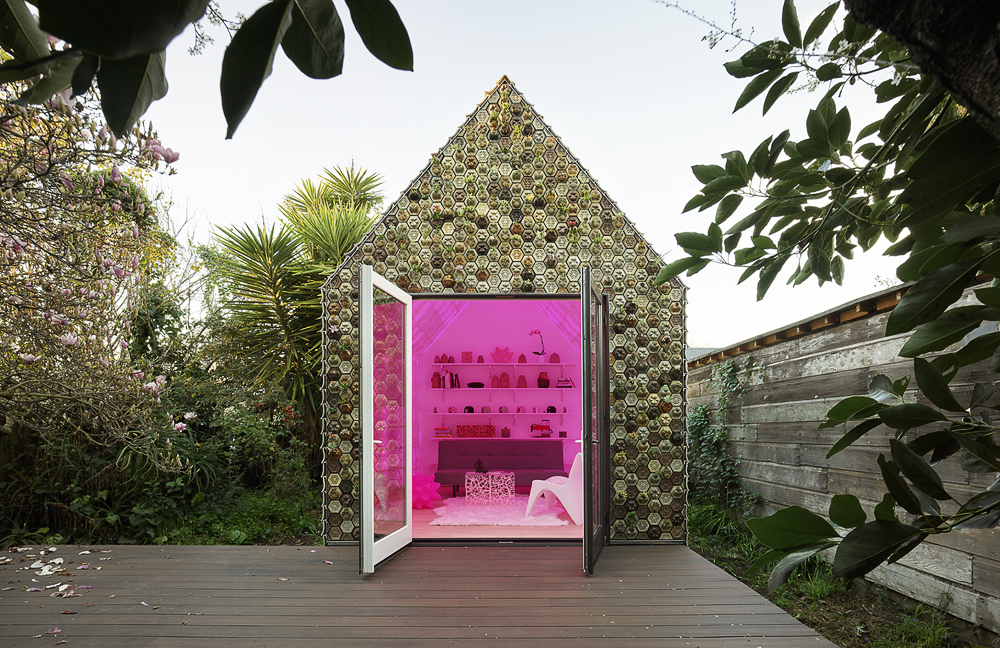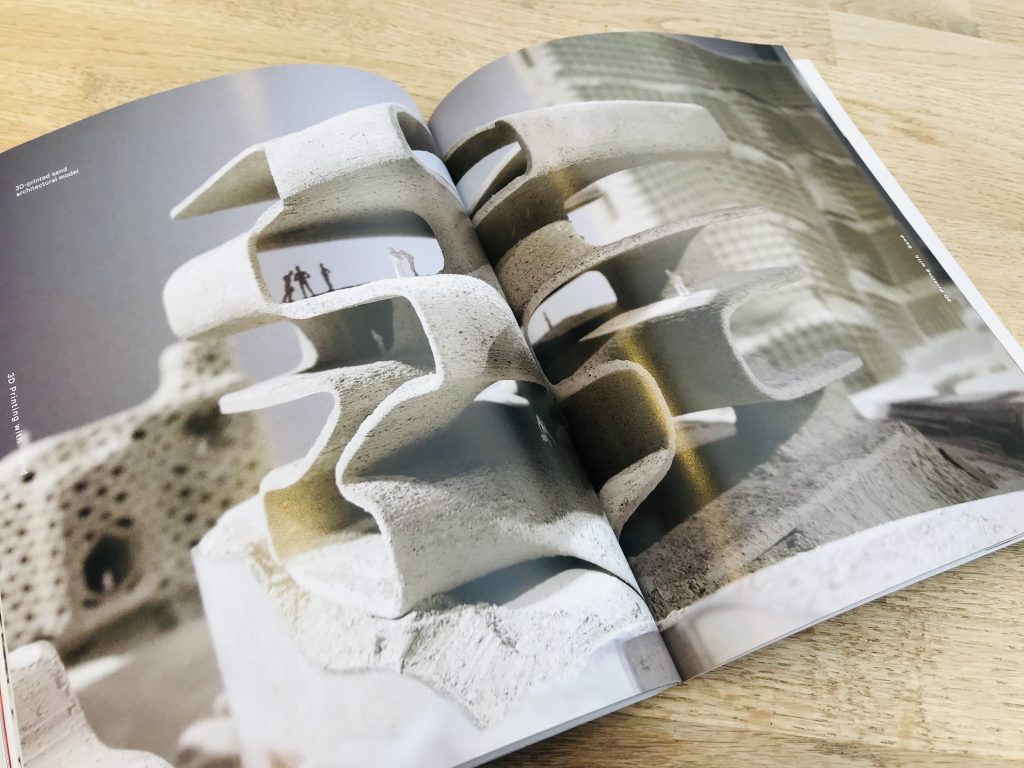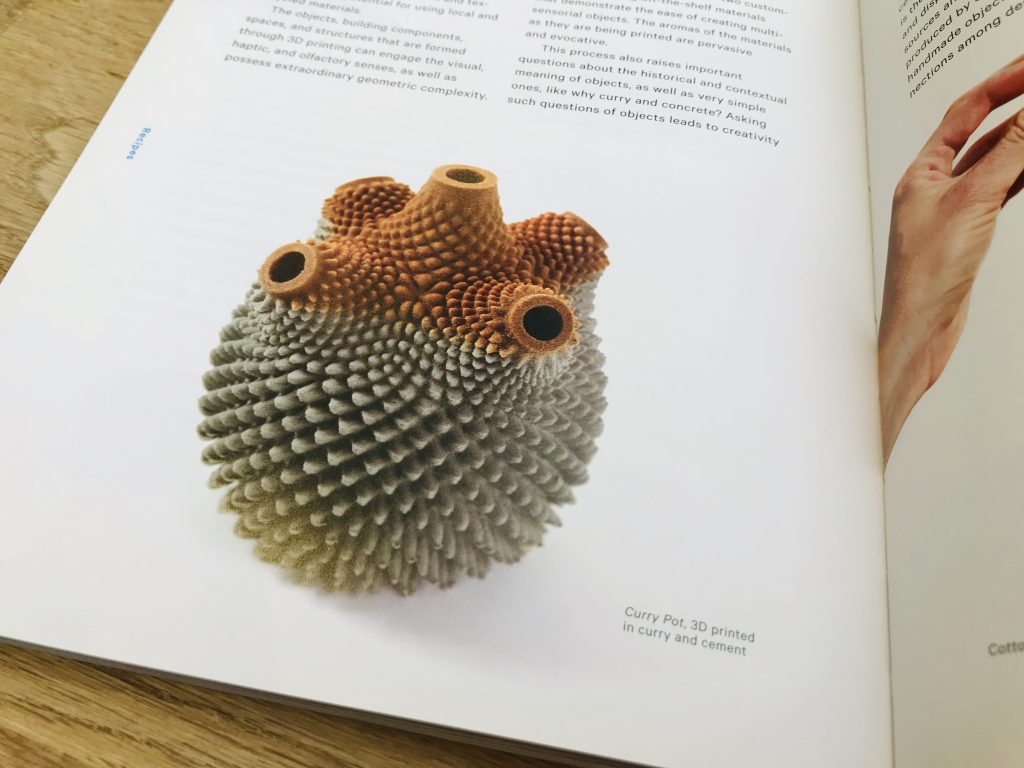Printing Architecture: Innovative Recipes for 3D Printing is the brainchild of Ronald Rael and Virginia San Fratello, co-founders of 3D printing “make-tank” Emerging Objects. Published by Princeton Architectural Press in 2018, the book cites Fabricated: The New World of 3D Printing (2012) by Columbia University Creative Machines Lab Director Hod Lipson, and Melba Kurman, author and faculty member at Singularity University, the text that gave us the notion that, with 3D printing:
“Manufacturing complexity is free.”
All in all, it takes a sweeping overview of the current materials available to the 3D printed construction industry and, more marginally, suggests some potential DIY solutions for making suitable materials.
So, is it worth the read?

Inside the Emerging Objects’ Cabin of Curiosities
Emerging Objects was founded in 2012 as an R&D studio and consultancy business, investigating “innovative 3D printing solutions for buildings, interiors and environments.”
The Cabin of Curiosities which made the rounds of popular design and news sites in February – March 2018, is the company’s most recent work, and applies 3D printing to make tiles capable of sustaining succulents and other small plants.
As Rael explained to us in an interview at the time of the project, “All the components [of the cabin] are sustainable and made from natural or upcycled waste streams.” a handful of materials explored in the project include, ceramic, sawdust, recycled Chardonnay grape skins and corn-based bio-plastics (i.e. PLA).

Following this project Emerging Objects then launched a crowdfunding campaign on Kickstarter named The Bottery: a ceramic 3D printing workshop. Closed June 15, 2018, The Bottery raised $34,193 to realize this idea, with the backing of 275 supporters. The Printing Architecture book was also part of the rewards for this campaign, and was shipped to backers in August.
Exploring materials and texture
Each chapter of Printing Architecture considers a different 3D printable material from the common, e.g. bioplastic, cement, clay, through to the unusual, e.g. coffee, tea, wine and sawdust.
The clear message throughout these chapters is that 3D printing has the potential to be a powerful tool for more creating sustainable architecture. Through extrusion, binder jetting, or whatever technology it may employ, 3D printing is a means of processing some materials that are currently underexplored in the wider construction industry. Though it may not be quite at a competitive scale yet.
Print textures are also extensively explored in the book, an eye-opener for those looking into its potential for the first time. This covers the common “loop” style 3D printing, often applied to plastic and ceramics, through to more uncommon, wavy shapes, some of which resemble fabrics patterns from the 60s and 70s…

…or the skin of a lychee.

Final thoughts on Printing Architecture
As is often the case with books written about emerging technologies, some of the references (e.g. to Z Corp 3D printers) are a little outdated, but it could also be a reflection of the nature of present 3D printing R&D. Many scientific researchers do still work with outdated machines. However, this is not enough to detract from the purpose of the book.
As an introduction to 3D printing in construction, Printing Architecture holds up well. It is also a good book to use as inspiration, and serve as a leapfrog to unconvetional creative structures.

On a deeper level, the thin epilogue of recipes gives an interesting insight into the experimental process that goes on in a materials development lab.
Though modest inside is comparison, Printing Architecture is in many ways an ideal coffee table book: idea for creating an impression and sparking interest in something new.
Make your Creative Application of the Year nominations and more in the 2019 3D Printing Industry Awards, open now.
For all the latest 3D printing news and reviews subscribe to the 3D Printing Industry newsletter, follow us on Twitter and like us on Facebook. Budding designer? Join 3D Printing Jobs now for new opportunities in this rapidly growing industry.
Featured image shows Printing Architecture: Innovative Recipes for 3D Printing by Ronald Rael and Virginia San Fratello. Photo by Beau Jackson


